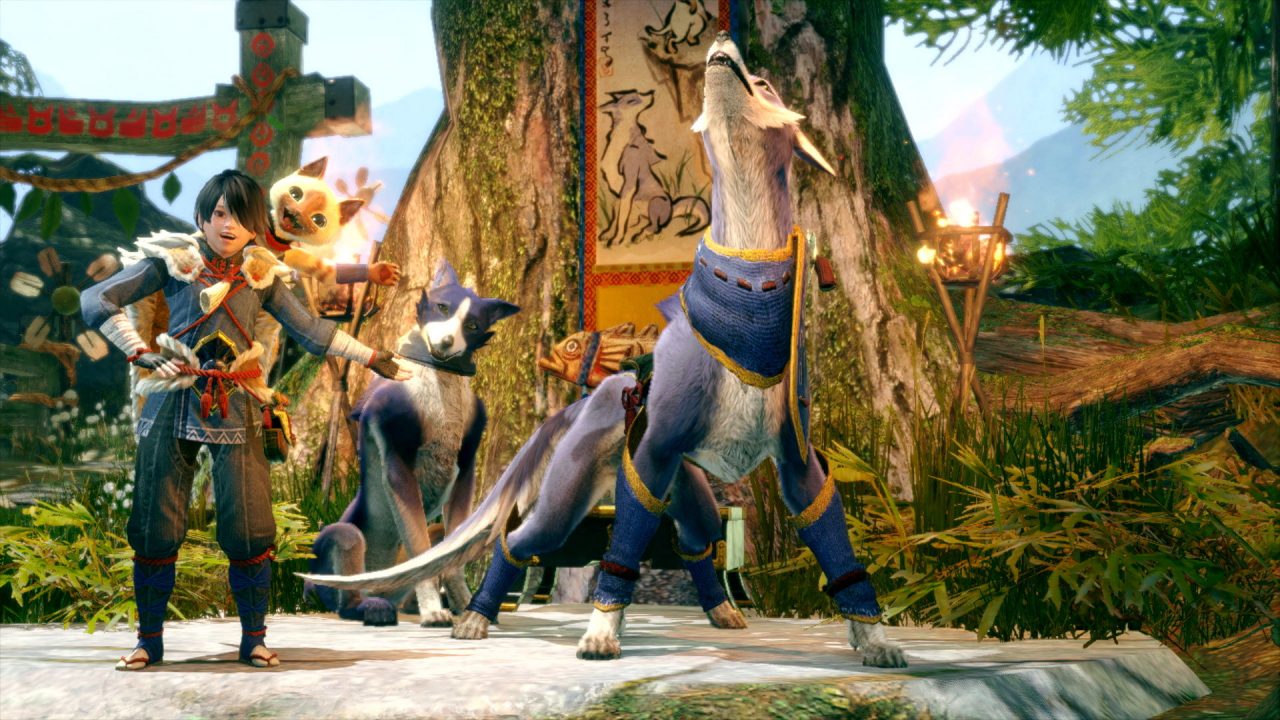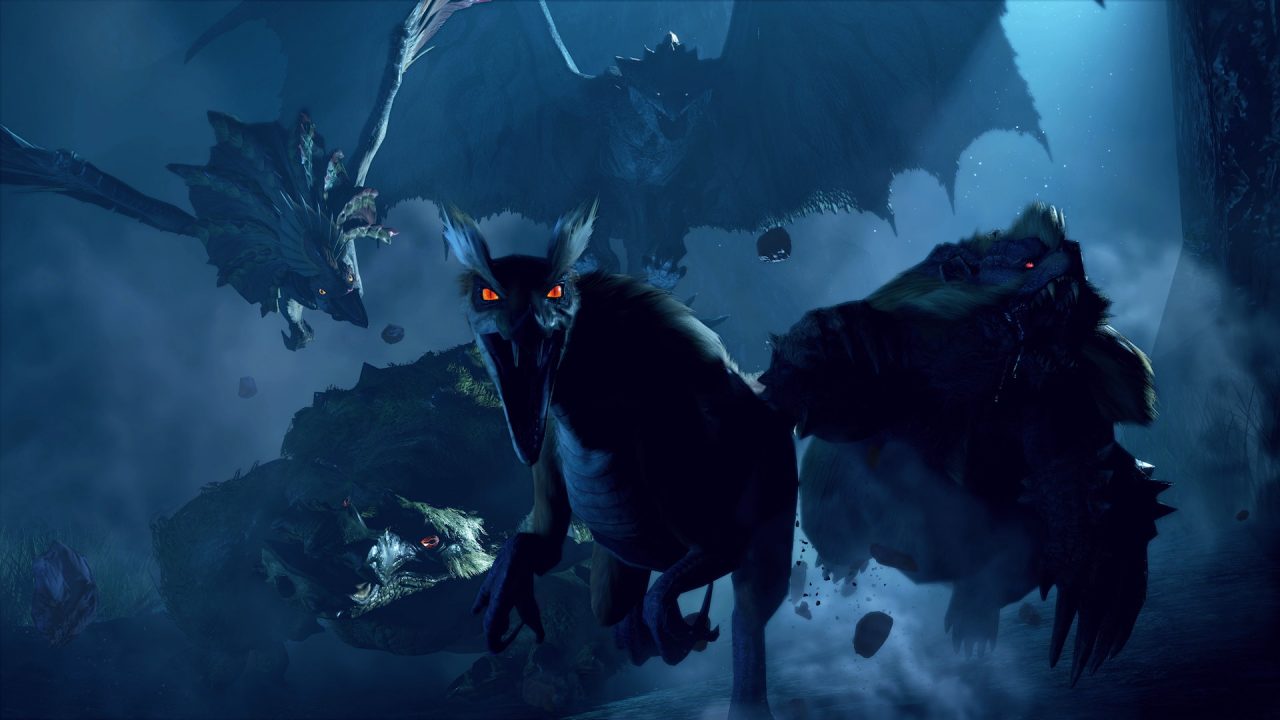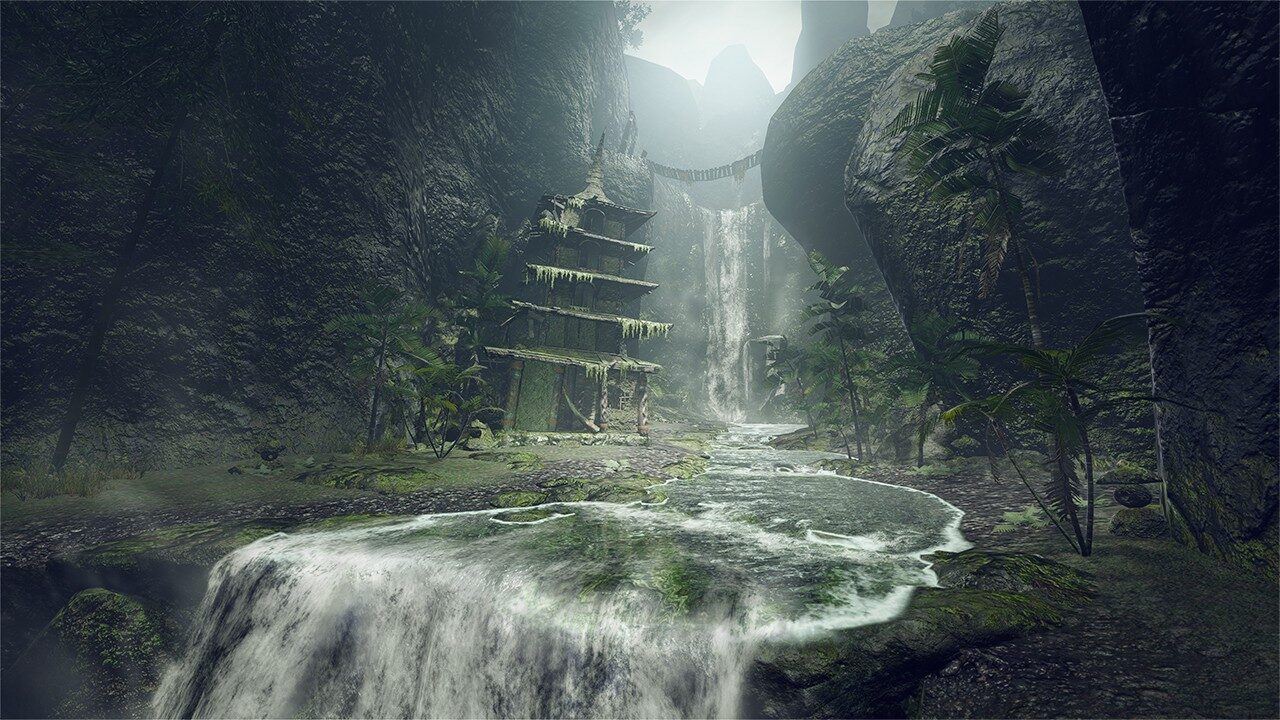The Monster Hunter series has been around for a long time, with fans always eager to see how Capcom switch up the formula with each entry. It’s refreshing to see the developers’ approach to “reinventing the wheel” with the series: they manage to be respectful of the concepts that brought Monster Hunter popularity in the first place while also modernising in areas that can draw in new players. I’ve personally only had limited experience with the series to this point, and was excited to see how the Xbox release of Monster Hunter Rise has upheld its predecessors’ standards.
When I started the game for the first time, a notification informed me that all the content previously released in updates for the Nintendo Switch version is available from the get-go. I’d expected as much: the content was free after all. But it’s still nice to have it immediately on launch for the Xbox version. It’s worth noting that this release does not include the Sunbreak expansion, which will be released separately later.
Character creation is an enjoyable experience. It has several different options to tweak facial structure, along with a good selection of skin tones, hairstyles and hair colours. I can spend a very long time in character creation screens, arguably too long, so while the customisation in Monster Hunter Rise has plenty to offer, I was also somewhat relieved that there weren’t modifier sliders for… everything. Some players may feel it’s a little lacking, but it helped me get into the game quicker.

Directly following the customisation of my character, my animal companions were also given the makeover treatment. Fans of Monster Hunter World will recognise the return of Palicos, the cat-like sidekicks who provide a range of support options while exploring, but new to Rise are Palamutes. I appreciated the choice to use the word “pal” in both of these names. Palominos in the next Monster Hunter? I digress. As Palicos are felines, Palamutes are canines. Their primary function is to assist with traversing the environment. What they also do, which I hope other games pick up on, is allow the player to perform various tasks while moving. For example, you can now sharpen your weapon while mounted without needing to stand in place until the process is complete. Gone are the days when you’d have a straggler in multiplayer; these between-fight tasks can now be completed on the move. Nobody gets left behind! It’s a wonderful implementation of efficiency, which is a key theme I picked up on with other design decisions throughout Rise.
Moving past character creation and into the game, the player begins in the village of Kamura. This village will serve as the main hub, with access to amenities such as the blacksmith, parts vendor, and various quest-givers. I enjoyed the old-style Japanese theme for Kamura. Other Monster Hunter titles I’ve played had a fairly distinct Western theme, perhaps attempting to appeal more to Western audiences. I’m not an expert on Japanese historical eras, so I won’t attempt to make an accurate guess on the visual influences, but fans of the general feudal period will have a lot to enjoy here. The NPCs are all animated to give a sense of community, with everybody going about their daily tasks and having a jolly old time. This liveliness creates quite a contrast to the origins of Kamura village, whose Hunters train specifically to fight a phenomenon called The Rampage.
Story-wise, Monster Hunter Rise is fairly simple in terms of its scope. The game’s main enjoyment comes from its missions, hunts, and grinding materials for crafting, so its story is really there to support and provide context to everything else. I think it does a wonderful job with this, as the gameplay loops tie nicely with the narrative. As I mentioned, Kamura Village has a history of fighting against The Rampage. These events occur when large monsters all attack the village simultaneously, seemingly with no particular reason. Because of this backstory, the player’s involvement is organic regarding how each task is necessary for survival.

Quests are issued from one of two NPCs, either offline or online. Village Quests progress the main story and are only available as single-player ventures, whereas Hub Quests are playable either solo or multiplayer. Hub quests are more generalised hunting missions. You unlock more areas to explore and more of the game’s features by progressing through Village Quests. It’s a fairly standard format, with the Hub Quests providing the replayability of key monster hunts and making them available as multiplayer experiences. I was glad to be able to tackle the Village Quests at my own pace, enjoying the cutscenes and learning how my weapon works without rushing to keep up alongside experienced players.
Something I really enjoyed with Rise is its deeper weapon-based gameplay. There are 14 different weapon types to choose from, each with their own distinct playstyle, strengths and weaknesses. I had a lot of fun with the Dual Blades; I enjoyed how their special skill allowed me to go on a rampage so long as I was careful with dodging attacks properly. It felt like I was being rewarded for playing well, with the only drawbacks being a constant stamina drain and the effect wearing off if I took a hit. My Palico and Palamute also felt more involved with this playstyle as well, with them picking up my slack if I ran out of stamina. Teamwork! Alongside the Dual Blades, the playstyles of the Long Sword, Insect Glaive and Light Bowgun were right down my alley. It’s easy to try different weapons, with a dedicated training ground to learn how each weapon works. And, of course, using different weapon types means crafting and upgrading different pieces of equipment. See how the cycle of grinding materials becomes so addictive? If you get bored of your current playstyle, you can simply pick another. The variety is satisfying.
Tying in perfectly with all this talk of weapons is a brand-new feature to the Monster Hunter series: the wirebug. I find it impressive that Capcom managed to create such an innovative and successful feature, yet it’s a bug. But I mean literally here, not the type that the QA team will lose sleep over. The wirebug offers a whole host of features, to the extent that it really impacts the entire gameplay experience compared to past series entries. You enter each map with two wirebugs, with more temporarily attainable as you explore. You can use them to travel in different ways, such as launching yourself upwards or swinging a short distance forwards. The bugs go into a brief “cooldown” state upon executing an action, so while you won’t ever actually run out of them, you will need to make informed choices on how and when you expend their charges. A practical use I quickly found for them is while carrying wyvern eggs; while previously a sluggish experience, you can now utilise the wirebug mechanics to move around both quicker and more safely.

In addition to its movement-enhancing capabilities, the wirebug also offers more options for combat. Each weapon type has its own set of Silkbind attacks. My Dual Blade onslaught suddenly became even more slaughterous, now using its Silkbind to charge through enemies and finish with a twirl of my blades if I got hit on my trajectory. As I said, each of the 14 weapon types has their own Silkbind skills, so weapons feel more fleshed-out and mobile than ever. Further into the game you also gain access to Switch Skills. These skills give you another layer of choice with regard to playstyle and to what load-out you take into each quest. The Sunbreak expansion added the ability to take two loud-outs with you per quest, and these load-outs can be swapped at will. It’s a shame that this release doesn’t have access to features like that yet. Soon!
As a Monster Hunter franchise dabbler, I think Rise has made some fantastic moves to make the series accessible to a wider audience. Some developers seem to think that “streamlining” features or adding quality-of-life improvements simply means dumbing things down. Capcom, however, have done the complete opposite by massively expanding weapons’ skillsets and travel options. They seem to understand that accessibility doesn’t necessarily mean simplicity. Refinement and broad design decisions are king here. The wirebug is now intrinsic to both combat and exploration, hand-in-hand with Palamutes. Neither of these creatures have hands, but allow the metaphor. I think series veterans might find this entry a touch easy in comparison to past entries, so hopefully all these new features can balance a little better with difficulty in future iterations. Monster Hunter Rise has looked at what did and didn’t work in past entries’ gameplay loops, and bridged the gap between with new features in a refreshingly effective way.



